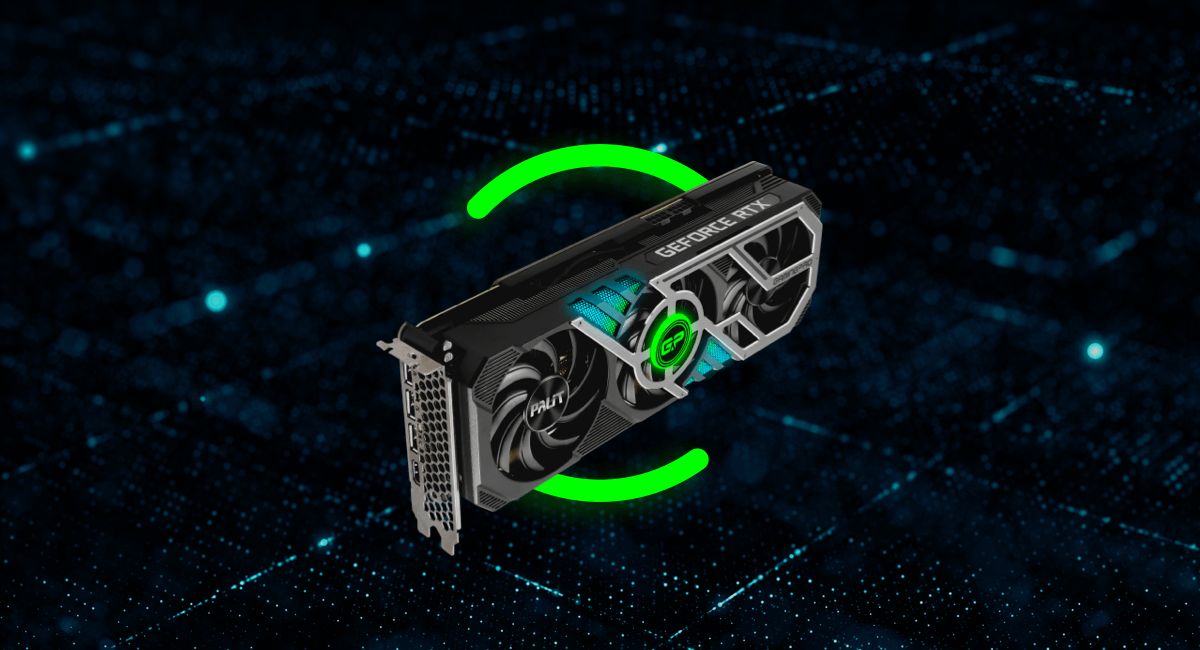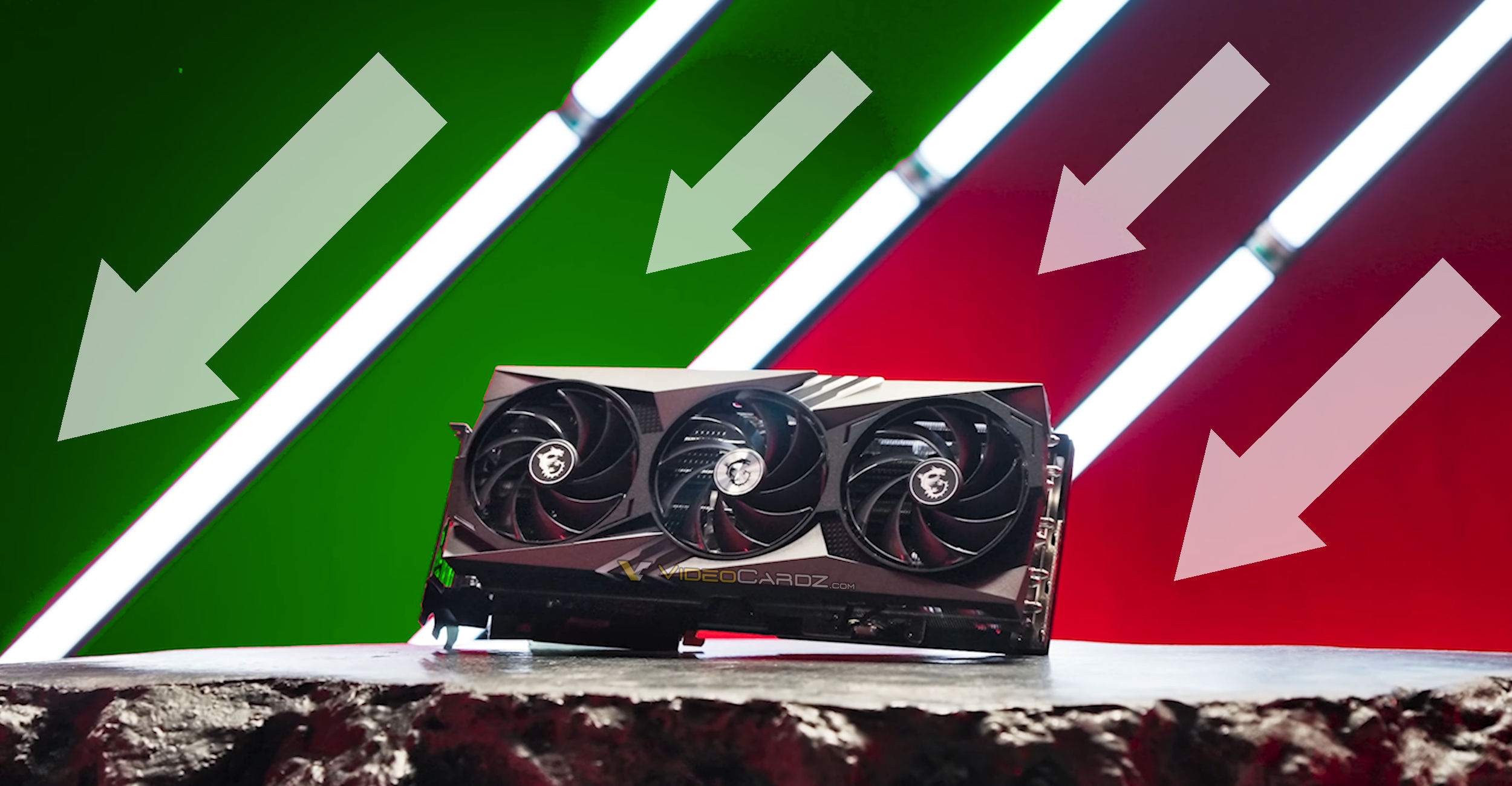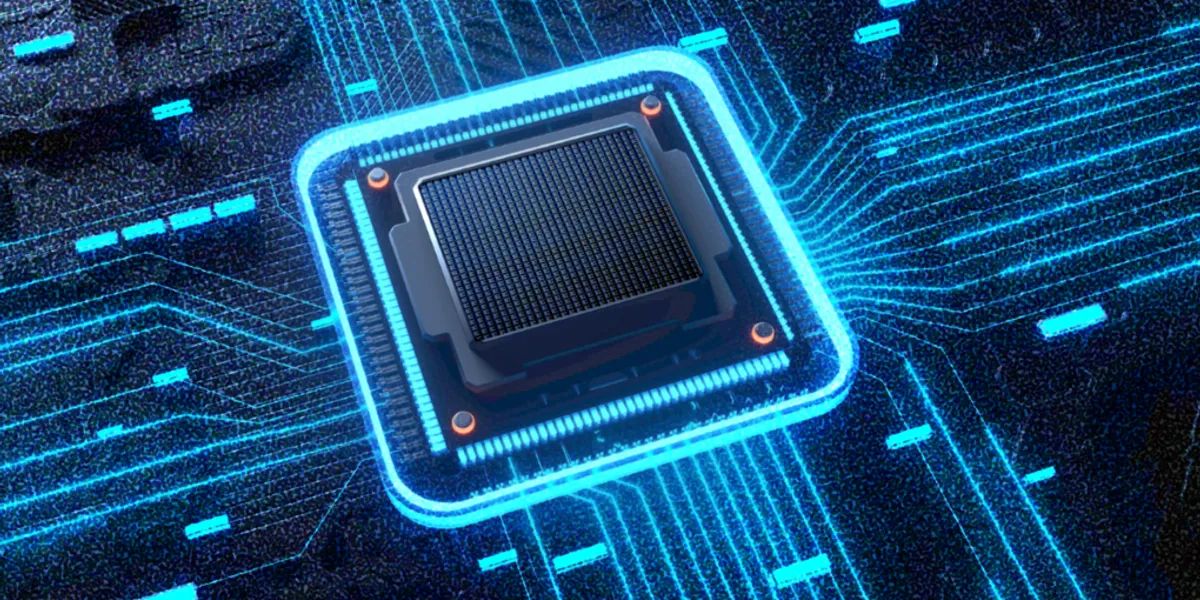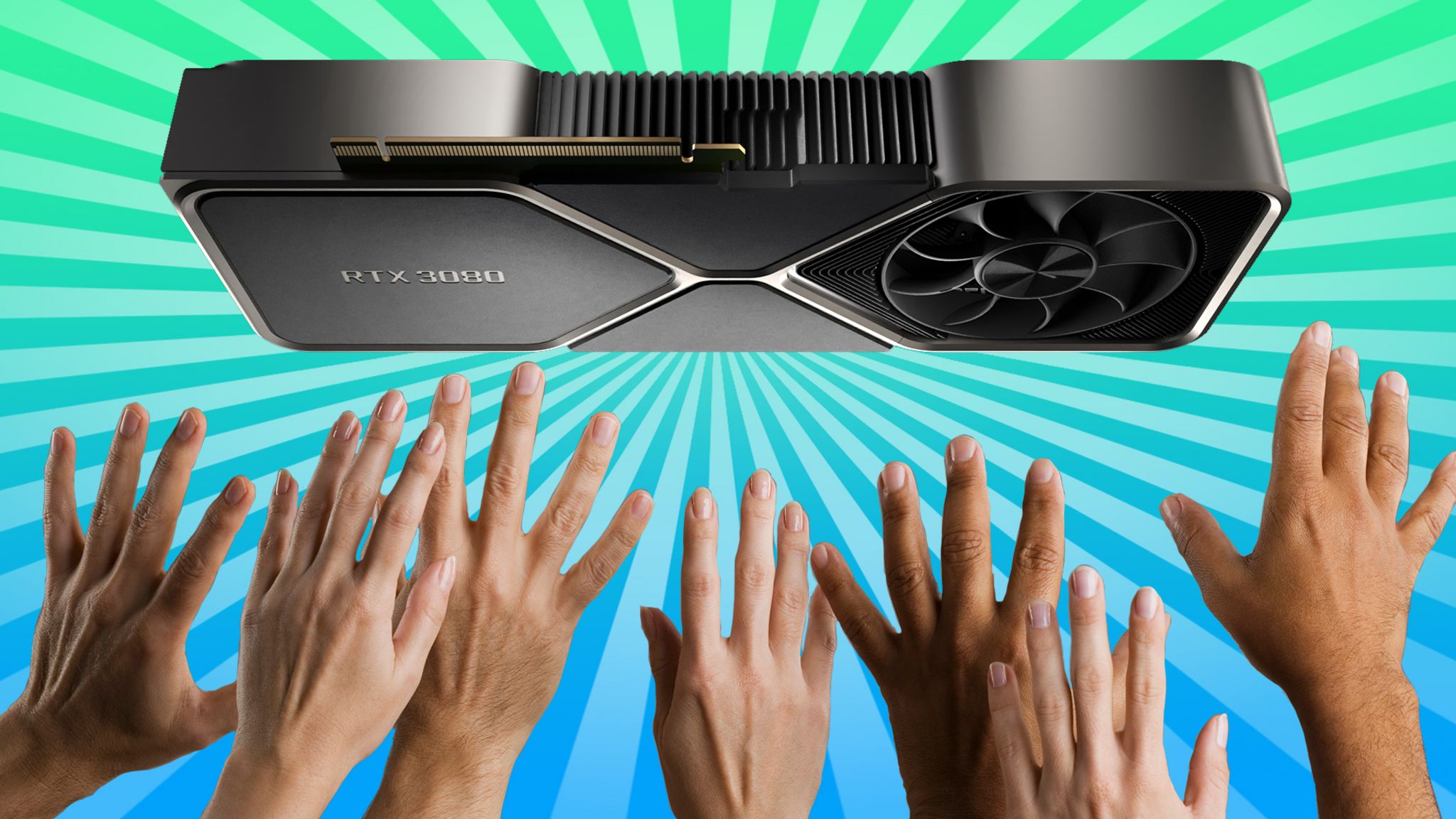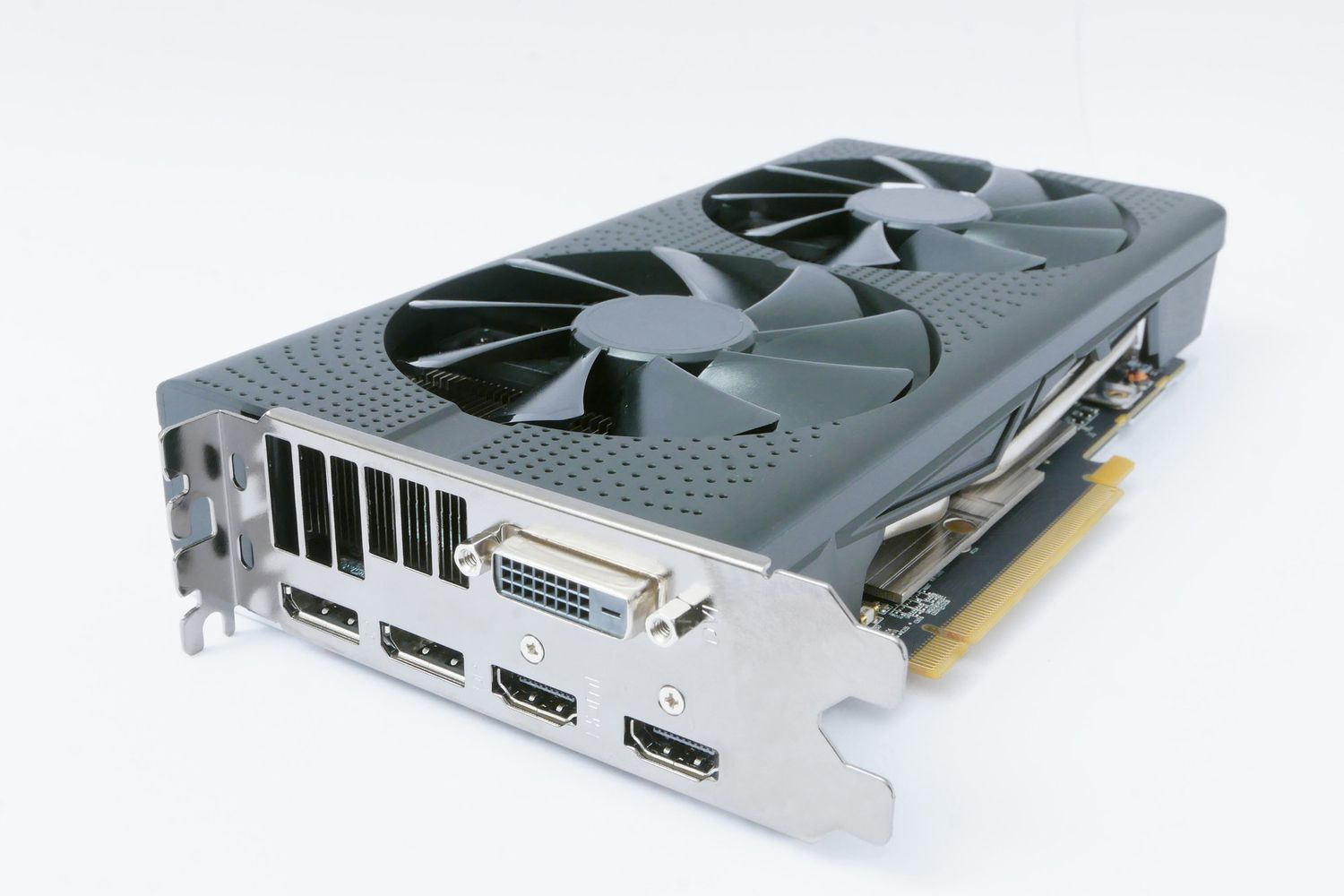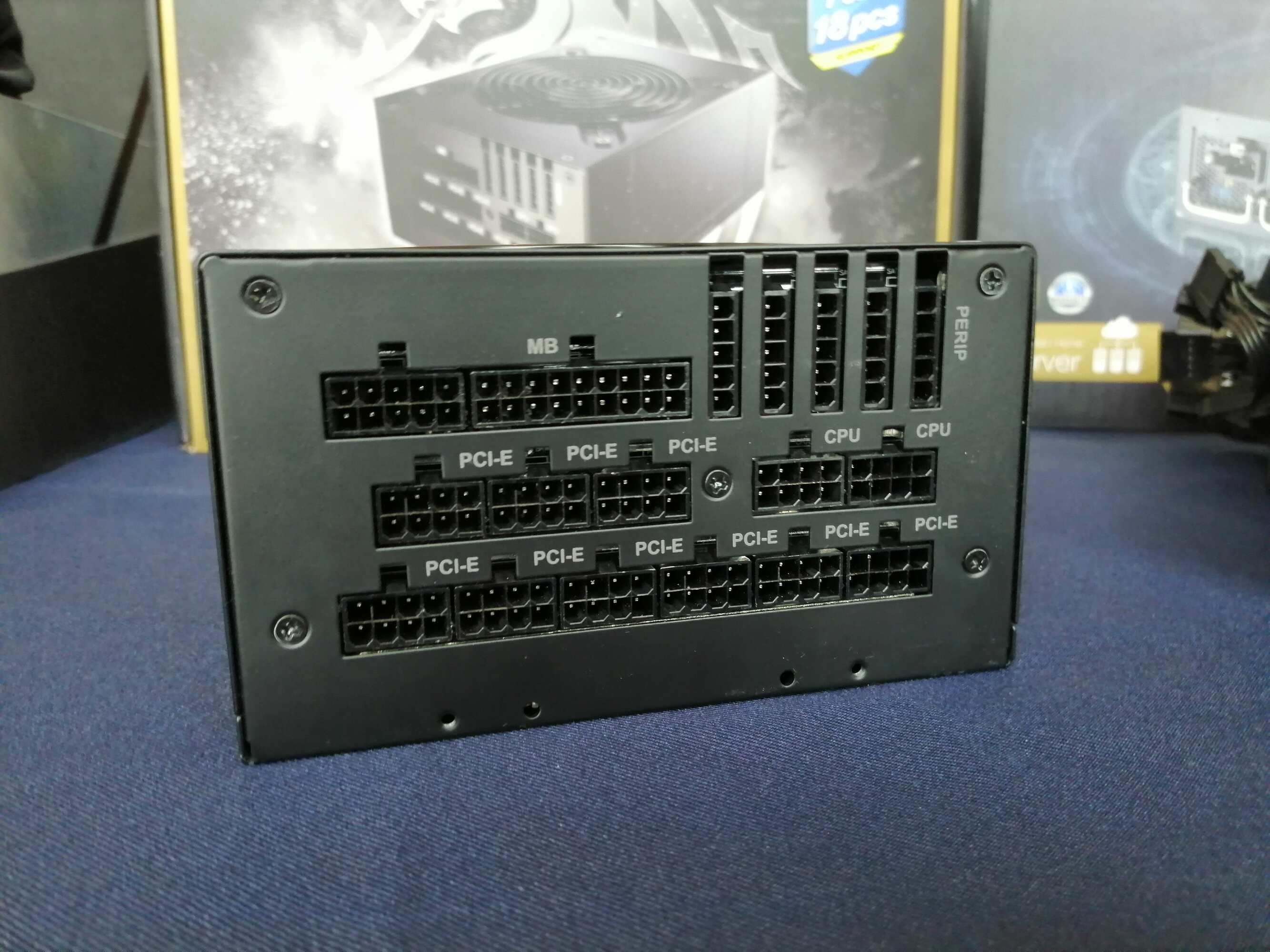Introduction
GPU mining, short for Graphics Processing Unit mining, has been a popular method for cryptocurrency enthusiasts to earn digital assets. With its ability to perform complex mathematical calculations required for mining, GPUs have played a crucial role in the early days of many digital currencies. However, as technology advances and new mining methods emerge, the future of GPU mining is uncertain.
In simple terms, GPU mining refers to the process of using a computer’s graphics card to solve complex mathematical problems in order to validate transactions and add them to the blockchain. This process is essential for securing the network and maintaining the decentralized nature of cryptocurrencies.
The history of GPU mining dates back to the early days of Bitcoin when mining could be done using regular CPUs. However, as mining difficulty increased and the number of miners grew, the need for more powerful hardware became evident. This is when GPUs entered the scene, providing significant improvements in mining efficiency.
As GPU mining gained popularity, so did the emergence of Application-Specific Integrated Circuit (ASIC) miners. These specialized devices are designed to perform mining tasks with unparalleled efficiency and have rendered GPU mining less effective for many cryptocurrencies. ASIC miners offer higher hash rates and consume less power compared to GPUs, making them the preferred choice for large-scale mining operations.
The current state of GPU mining is marked by this competition with ASIC miners. While GPUs are still used for mining certain cryptocurrencies that are ASIC-resistant, such as Ethereum, their role has significantly diminished in the Bitcoin mining scene.
Despite the limitations and challenges posed by ASIC miners, GPU mining still has its advantages. For one, GPUs are more versatile than ASICs as they can be used for other computationally-intensive tasks like rendering graphics and running artificial intelligence algorithms. This makes GPU mining an attractive option for miners who require the flexibility to switch between different tasks and cryptocurrencies.
The future of GPU mining largely depends on several factors, including the development of new technologies, changes in mining algorithms, and the regulatory landscape surrounding cryptocurrencies. Miners, investors, and industry experts are closely monitoring these factors to anticipate when GPU mining may come to an end.
Definition of GPU Mining
GPU mining, or Graphics Processing Unit mining, involves using the computational power of a computer’s graphics card to perform mining operations for cryptocurrencies. GPUs are primarily designed to handle graphic-intensive tasks like gaming and rendering, but their parallel processing capabilities make them well-suited for cryptocurrency mining as well.
In the context of cryptocurrency mining, GPUs are used to solve complex mathematical equations in order to validate transactions and add them to the blockchain. This process requires significant computational power and is essential for maintaining the security and integrity of decentralized digital currencies.
Unlike traditional mining, where physical materials like gold or diamonds are extracted from the ground, GPU mining is a purely digital process. Miners use their GPUs to perform calculations, known as hashing, which involves repeatedly running through different inputs to generate a unique output hash. The goal is to find a hash that meets the specific requirements of the mining algorithm, which varies depending on the cryptocurrency being mined.
GPU mining became popular due to its ability to offer a relatively affordable and accessible mining solution. Compared to specialized mining hardware like ASIC miners, GPUs are more widely available and can be purchased at consumer-grade prices. This makes GPU mining feasible for individual miners and small-scale operations.
Furthermore, GPUs are highly customizable, allowing miners to optimize their mining setups for maximum performance and efficiency. Miners can tweak settings like clock speeds, memory frequencies, and power limits to achieve higher hash rates and lower energy consumption.
One key advantage of GPU mining is its versatility. In addition to mining cryptocurrencies, GPUs can be utilized for various other purposes, such as gaming, video editing, and artificial intelligence. This flexibility makes GPUs attractive not only for dedicated miners but also for individuals who want to utilize their computers for multiple tasks.
Overall, GPU mining plays a crucial role in the cryptocurrency ecosystem, providing the computational power needed to process transactions and secure the network. While the rise of ASIC miners has impacted the dominance of GPU mining in some cryptocurrencies, GPUs still offer unique advantages that make them a viable and versatile mining solution.
The History of GPU Mining
The history of GPU mining can be traced back to the early days of Bitcoin when cryptocurrency mining was still in its infancy. Initially, Bitcoin mining could be done using regular CPUs (Central Processing Units). However, as the popularity of Bitcoin grew and more miners joined the network, the demand for more powerful hardware became evident.
It was during this time that GPUs (Graphics Processing Units) emerged as a game-changer in the world of cryptocurrency mining. Miners quickly realized that GPUs, designed primarily for rendering graphics and handling complex visual computations, could also be utilized for the computationally-intensive task of mining cryptocurrencies.
GPUs offered significant advantages over CPUs in terms of mining performance and efficiency. The parallel processing capabilities of GPUs allowed for the simultaneous execution of multiple mining operations, enabling miners to process a larger number of hash calculations per second. As a result, GPU mining became the go-to method for miners looking to maximize their mining output.
In the early years of GPU mining, individual miners could achieve impressive hash rates using a single graphics card. Mining software, such as CGMiner and CUDAminer, became widely available, making it easier for people to get started with GPU mining. As the demand for GPUs increased, manufacturers like AMD and NVIDIA began producing cards specifically tailored for mining.
The popularity of GPU mining soared as more cryptocurrencies were introduced, each with its own mining algorithm. Miners began to explore and experiment with different cryptocurrencies, looking for the most profitable ones to mine with their GPUs. This led to the creation of mining pools, where multiple miners joined forces to increase their chances of solving blocks and earning rewards.
However, as the mining difficulty continued to rise, GPU mining eventually faced competition from ASIC (Application-Specific Integrated Circuit) miners. ASICs are specialized devices built specifically for mining cryptocurrencies and offer significantly higher hash rates and energy efficiency compared to GPUs. This made GPU mining less profitable for certain cryptocurrencies, particularly Bitcoin, where ASICs dominated the mining scene.
Despite the rise of ASIC miners, GPU mining remains relevant in the cryptocurrency ecosystem. Some cryptocurrencies, such as Ethereum, have taken measures to maintain ASIC resistance, making GPU mining the preferred method for securing their networks. Additionally, the versatility of GPUs in performing other tasks like gaming and artificial intelligence further contributes to their ongoing popularity among miners.
Overall, the history of GPU mining is closely intertwined with the growth and evolution of cryptocurrency mining. From its humble beginnings as a way to mine Bitcoin with regular CPUs, GPU mining has played a significant role in the industry, offering miners a more affordable and accessible option for earning digital assets.
The Rise of ASIC Miners
The rise of ASIC (Application-Specific Integrated Circuit) miners marked a major shift in the cryptocurrency mining landscape. ASIC miners are specialized hardware devices specifically designed for the purpose of mining cryptocurrencies. Unlike GPUs (Graphics Processing Units) which are more versatile, ASIC miners are engineered to perform mining tasks with unparalleled efficiency.
ASIC miners gained popularity as the mining difficulty increased and the demand for more powerful mining equipment grew. These dedicated machines offer significantly higher hash rates compared to GPUs, enabling miners to process more calculations per second and potentially earn more rewards. The superior performance and energy efficiency of ASICs quickly made them a preferred choice for large-scale mining operations.
One of the key advantages of ASIC miners is their ability to solve specific mining algorithms more effectively than GPUs. Bitcoin, for example, uses the SHA-256 algorithm, and ASICs designed for Bitcoin mining can perform hash calculations using this algorithm much faster and more efficiently than GPUs. This specialization allows ASIC miners to outperform GPUs in terms of mining speed and energy consumption.
As ASIC miners entered the scene, they started to dominate the Bitcoin mining industry. The high computational power and specialized nature of ASICs made it increasingly difficult for GPU miners to compete. This led to a centralization of mining power, with large mining farms and companies investing heavily in ASIC hardware to gain a competitive edge.
The rise of ASIC miners also brought concerns regarding the decentralization of cryptocurrency networks. ASICs have the potential to concentrate mining power in the hands of a few, making it difficult for smaller miners to participate and contribute to the security of the network. Critics argue that this concentration of power goes against the core principles of decentralization that cryptocurrencies were built upon.
Despite the dominance of ASIC miners, some cryptocurrencies have taken measures to maintain ASIC resistance, ensuring that their networks remain more decentralized. For instance, cryptocurrencies like Ethereum have implemented mining algorithms that are intentionally designed to be ASIC-resistant, making GPU mining the preferred method for securing their networks.
While ASIC miners offer undeniable advantages in terms of mining efficiency, their specialized nature also poses challenges. ASICs are expensive to produce and purchase, and their use is limited to specific cryptocurrencies and mining algorithms. This means that if a cryptocurrency changes its mining algorithm or becomes ASIC-resistant, the ASIC hardware becomes obsolete and potentially worthless.
The rise of ASIC miners reshaped the mining landscape, pushing GPU mining to the sidelines for certain cryptocurrencies. However, GPU mining still holds its ground by remaining viable for cryptocurrencies that prioritize decentralization and ASIC resistance. The ongoing battle between ASIC miners and GPU miners continues to shape the future of the cryptocurrency mining industry.
The Current State of GPU Mining
The current state of GPU mining is marked by a changing landscape and evolving dynamics in the cryptocurrency industry. While GPU mining still plays a significant role in certain cryptocurrencies, it has faced challenges from the rise of ASIC (Application-Specific Integrated Circuit) miners.
One of the key factors influencing the current state of GPU mining is the dominance of ASIC miners in certain cryptocurrencies, particularly Bitcoin. Bitcoin’s mining difficulty has increased exponentially over the years, making it extremely challenging for GPUs to compete with the specialized hardware of ASICs. As a result, GPU mining for Bitcoin has become increasingly less profitable and less widespread.
However, GPU mining hasn’t disappeared entirely. Many other cryptocurrencies, most notably Ethereum, have deliberately designed their mining algorithms to be ASIC-resistant. This decision has allowed GPU mining to remain relevant and profitable in these networks. Ethereum, in particular, has a significant mining community that relies on GPUs to process transactions and secure the network.
The versatility of GPUs also contributes to their continuing role in GPU mining. Unlike ASIC miners, GPUs can be repurposed for various other computationally-intensive tasks, such as gaming, video editing, and artificial intelligence. This flexibility makes GPU mining an attractive option for miners who want to utilize their hardware for different purposes.
The profitability of GPU mining depends on several factors, including the price and availability of GPUs, electricity costs, and the mining difficulty of the chosen cryptocurrency. As the demand for GPUs has increased, prices have risen, making it more expensive for miners to acquire the necessary hardware. Additionally, electricity costs can significantly impact profitability, as mining requires substantial energy consumption.
Another aspect influencing the current state of GPU mining is the emergence of mining pools. Mining pools allow individual miners to combine their resources and increase their chances of mining a block and earning rewards. Pooling resources has become essential in an increasingly competitive mining landscape, especially for GPU miners who may not have access to large-scale mining facilities.
Regulations and legal considerations also play a role in the current state of GPU mining. Different countries have varying attitudes towards cryptocurrencies and mining operations, with some embracing them and others imposing restrictions. Miners need to navigate through these regulations and ensure compliance to ensure the legality and sustainability of their mining activities.
Overall, the current state of GPU mining is a mix of challenges and opportunities. While ASIC miners have impacted the dominance of GPUs in certain cryptocurrencies, GPU mining remains a profitable and viable option for miners who focus on ASIC-resistant coins like Ethereum. The versatility of GPUs and the ability to repurpose them for other tasks also contribute to their continued relevance in the mining industry.
The Limitations of GPU Mining
While GPU mining has been a popular method for cryptocurrency mining, it does have certain limitations that need to be considered. These limitations affect aspects such as efficiency, scalability, and profitability for miners.
One of the primary limitations of GPU mining is its diminishing efficiency compared to specialized hardware like ASIC (Application-Specific Integrated Circuit) miners. GPUs are designed to handle a variety of computational tasks, including gaming and graphics rendering, which means they are not optimized solely for mining. As a result, the hash rates achieved by GPUs may not be as high as those of ASICs, leading to a lower mining efficiency.
Scalability is another limitation of GPU mining. As the mining difficulty of cryptocurrencies increases and the number of miners grows, the demand for more powerful mining equipment becomes crucial. While multiple GPUs can be utilized to increase mining power, scaling beyond a certain point becomes challenging due to factors like space limitations, power supply requirements, and heat dissipation concerns. This scalability limitation can hinder the ability of GPU miners to keep up with larger mining operations.
Energy consumption is also worth considering in the context of GPU mining limitations. GPUs, being powerful computing devices, consume a substantial amount of electricity to operate. This energy usage not only adds to the cost of mining but also has environmental implications. As the complexity of mining algorithms continues to increase, so does the energy consumption required by GPUs, making energy efficiency an important consideration for miners.
Another limitation of GPU mining is its vulnerability to algorithm changes. Cryptocurrencies can change their mining algorithms to maintain network security or prevent ASIC miners from dominating the mining scene. While this may be beneficial for maintaining decentralization, it can render GPU mining hardware obsolete for certain cryptocurrencies. Miners relying solely on GPUs may face the challenge of needing to switch to other cryptocurrencies or invest in different mining equipment when algorithm changes occur.
The availability and cost of GPUs can also impact GPU mining. During periods of high demand, such as when new hardware is released or when the price of cryptocurrencies surges, the availability of GPUs may become scarce and prices may rise. This can make it more difficult and costly for miners to obtain the necessary hardware, impacting the profitability and accessibility of GPU mining.
Regulatory concerns and legal uncertainties can also pose limitations for GPU miners. The legality of mining activities and the taxation of cryptocurrency earnings may vary from country to country. Miners need to navigate through these regulations and ensure compliance, which can be a complex and time-consuming process.
Despite these limitations, GPU mining continues to be a viable option for miners, particularly in cryptocurrencies that prioritize decentralization and are resistant to ASIC dominance. The versatility of GPUs, their ability to perform other computing tasks, and the potential for profitability still make GPU mining an attractive choice for many miners.
The Future of GPU Mining
The future of GPU mining is subject to numerous factors that will shape its trajectory within the cryptocurrency industry. While the rise of ASIC (Application-Specific Integrated Circuit) miners has posed challenges for GPU mining, there are several key aspects to consider when analyzing its future.
One of the factors that will influence the future of GPU mining is the constant development of new mining technologies. Graphics card manufacturers like AMD and NVIDIA are investing in research and development to improve the energy efficiency and hashing power of GPUs. These advancements may allow GPUs to remain competitive with ASIC miners, especially if they can strike a balance between performance, efficiency, and affordability.
In addition, changes in mining algorithms can impact the future of GPU mining. Cryptocurrencies that are designed to be ASIC-resistant, like Ethereum, rely on GPU miners to maintain network security and decentralization. If more cryptocurrencies adopt ASIC-resistant algorithms or develop new consensus mechanisms that favor GPU mining, it could provide an avenue for continued growth and profitability for GPU miners.
The regulatory landscape surrounding cryptocurrencies and mining activities will also play a role in influencing the future of GPU mining. As governments and regulatory bodies establish clearer guidelines and regulations, it could provide more stability and legitimacy to the industry. Clear regulations can help level the playing field and provide a favorable environment for GPU mining operations to thrive.
Technological advancements outside of the mining industry may also impact the future of GPU mining. As artificial intelligence, machine learning, and virtual reality applications continue to evolve, the demand for powerful GPUs may increase. This increased demand could lead to a shortage of GPUs, affecting their availability and potentially increasing their price. Miners will need to adapt and find efficient ways to acquire and utilize GPUs amidst these market changes.
The future of GPU mining will also be influenced by the transition of cryptocurrencies from proof-of-work (PoW) to proof-of-stake (PoS) consensus algorithms. PoS eliminates the need for mining hardware altogether, as block validators are chosen based on their ownership of the cryptocurrency itself. If more cryptocurrencies adopt PoS or hybrid consensus models, GPU mining could be significantly reduced or even phased out entirely.
Overall, the future of GPU mining is uncertain but not without possibilities. It will be shaped by technological advancements, changes in mining algorithms, regulatory developments, and the evolution of consensus mechanisms in the cryptocurrency industry. While ASIC miners have posed challenges for GPU mining, the flexibility, versatility, and potential for ASIC-resistance of GPUs provide a foundation for continued relevance and profitability in the mining landscape.
Factors Affecting the End of GPU Mining
The end of GPU mining, as we know it, is influenced by several factors within the cryptocurrency industry. While GPU mining continues to have a role in certain cryptocurrencies, the emergence of new technologies and evolving dynamics may potentially impact its future viability.
One of the key factors affecting the end of GPU mining is the development and widespread adoption of ASIC (Application-Specific Integrated Circuit) miners. ASICs are designed specifically for mining cryptocurrencies, offering significantly higher hash rates and energy efficiency compared to GPUs. As ASIC miners become more prevalent and accessible, the demand for GPU mining may diminish, especially in cryptocurrencies dominated by ASIC hardware.
Changes in mining algorithms can also contribute to the end of GPU mining. Cryptocurrencies that transition from proof-of-work (PoW) to alternative consensus algorithms like proof-of-stake (PoS) or delegated proof-of-stake (DPoS) eliminate the need for traditional mining altogether. In these systems, validators or block producers are chosen based on the ownership of the cryptocurrency itself, rendering GPU mining obsolete.
Regulations and legal considerations represent another factor that could affect the end of GPU mining. Governments around the world have varied stances towards cryptocurrencies and mining operations. Stringent regulations or strict legislation can impose significant barriers on miners, making it challenging to operate and profit from GPU mining. Uncertainty in the regulatory landscape may deter miners from investing in GPU hardware and ultimately contribute to its decline.
The scalability of GPU mining is also an important factor to consider. Some GPU mining operations struggle to scale due to limitations in power consumption, cooling infrastructure, and space requirements. As the demand for more powerful mining equipment grows, miners may face challenges in scaling their operations efficiently, which could affect the long-term sustainability of GPU mining.
Technological advancements in hardware also play a role in the end of GPU mining. As manufacturers continue to produce more advanced ASIC miners or innovative mining technologies, the appeal and profitability of GPU mining may decline. The availability of affordable and efficient ASIC hardware, combined with lower energy consumption, could lead to a shift away from GPU mining over time.
Finally, the market demand for GPUs outside of cryptocurrency mining can impact the end of GPU mining. If demand for graphics cards in other industries, such as gaming or artificial intelligence, outstrips the supply, it may result in reduced availability and increased prices for miners. This, in turn, can make GPU mining less economically viable and accelerate its decline.
Overall, the end of GPU mining is contingent upon various factors, including the rise of ASIC miners, changes in mining algorithms, regulations, scalability challenges, technological advancements, and market demands. While GPU mining may persist in certain cryptocurrencies, these factors could contribute to a gradual decline in its prominence within the cryptocurrency mining landscape.
Conclusion
GPU mining has played a significant role in the early days of cryptocurrency mining, offering an accessible and versatile solution for individuals and small-scale operations. Despite the rise of ASIC (Application-Specific Integrated Circuit) miners and their impact on the dominance of GPU mining, there are still factors that contribute to its ongoing relevance and potential for profitability.
The history of GPU mining has demonstrated its ability to adapt and evolve with changes in the cryptocurrency industry. From its humble beginnings as a way to mine Bitcoin with regular CPUs, GPU mining quickly emerged as a more efficient and cost-effective method. It allowed miners to process a larger number of hash calculations and became the preferred choice for many cryptocurrencies.
The rise of ASIC miners, specifically designed for cryptocurrency mining, has posed challenges for GPU mining. ASICs offer higher hash rates and energy efficiency, making them more profitable and attractive for large-scale mining operations. However, GPU mining continues to thrive in cryptocurrencies that prioritize decentralization and ASIC resistance.
While ASIC miners might dominate certain cryptocurrencies, the ongoing development of new mining technologies and changes in mining algorithms provide opportunities for GPU mining to remain relevant. Improvements in GPU performance, energy efficiency, and affordability can help maintain its competitiveness in the mining landscape.
Regulatory considerations also impact the future of GPU mining, with different jurisdictions implementing varying policies towards cryptocurrencies. Clear regulations can provide stability and legitimacy to the industry, fostering an environment where GPU mining can flourish.
Ultimately, the future of GPU mining depends on a combination of technological advancements, regulations, market demands, and the resilience of the cryptocurrency market itself. As the industry continues to evolve, GPU mining may face challenges but also find new opportunities in emerging cryptocurrencies and applications outside of mining.
In conclusion, while the end of GPU mining may be influenced by factors such as the rise of ASIC miners and algorithm changes, the versatility and adaptability of GPUs, along with their role in ASIC-resistant cryptocurrencies, indicate that GPU mining will likely continue to have a place in the cryptocurrency mining landscape.







